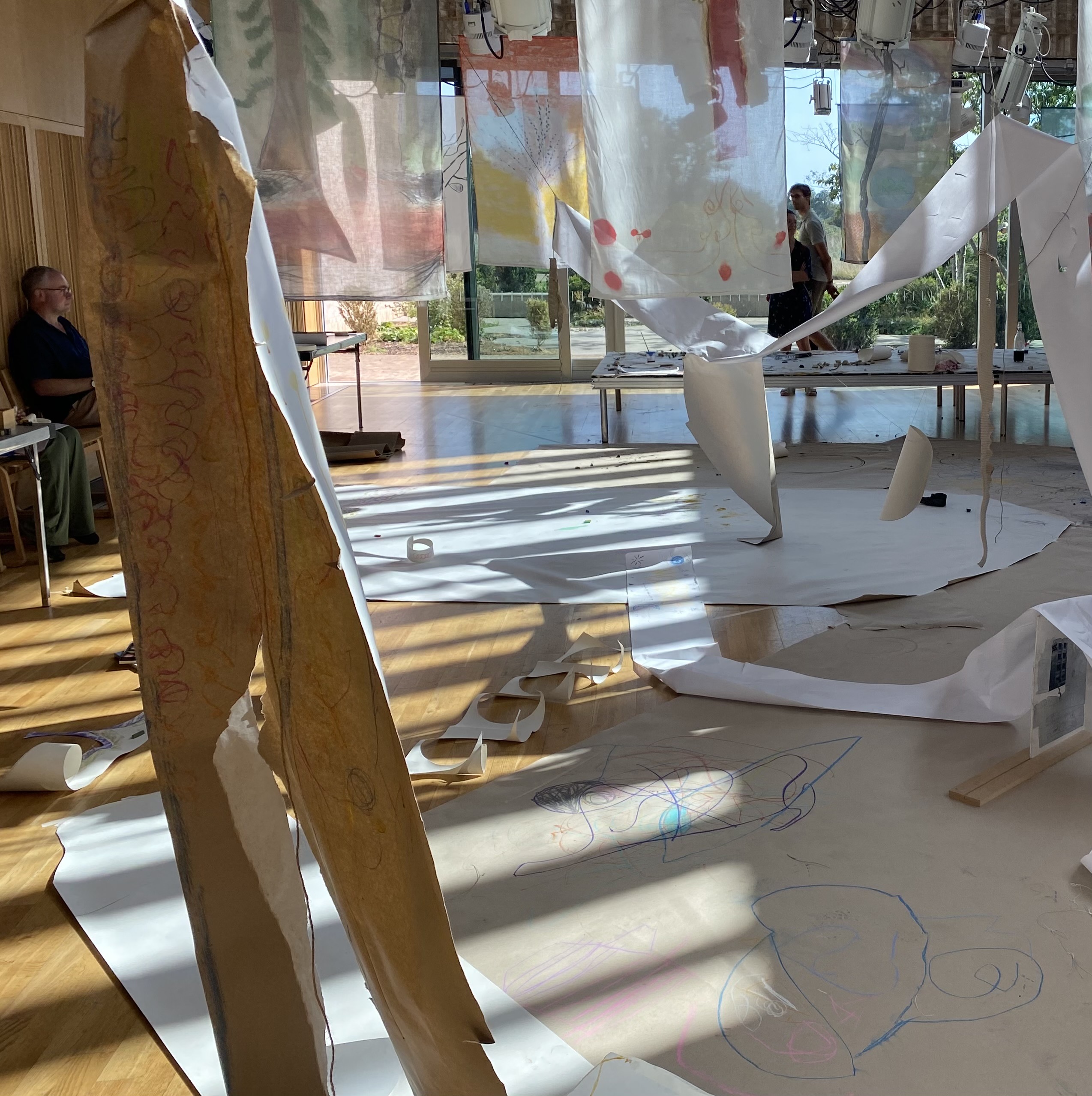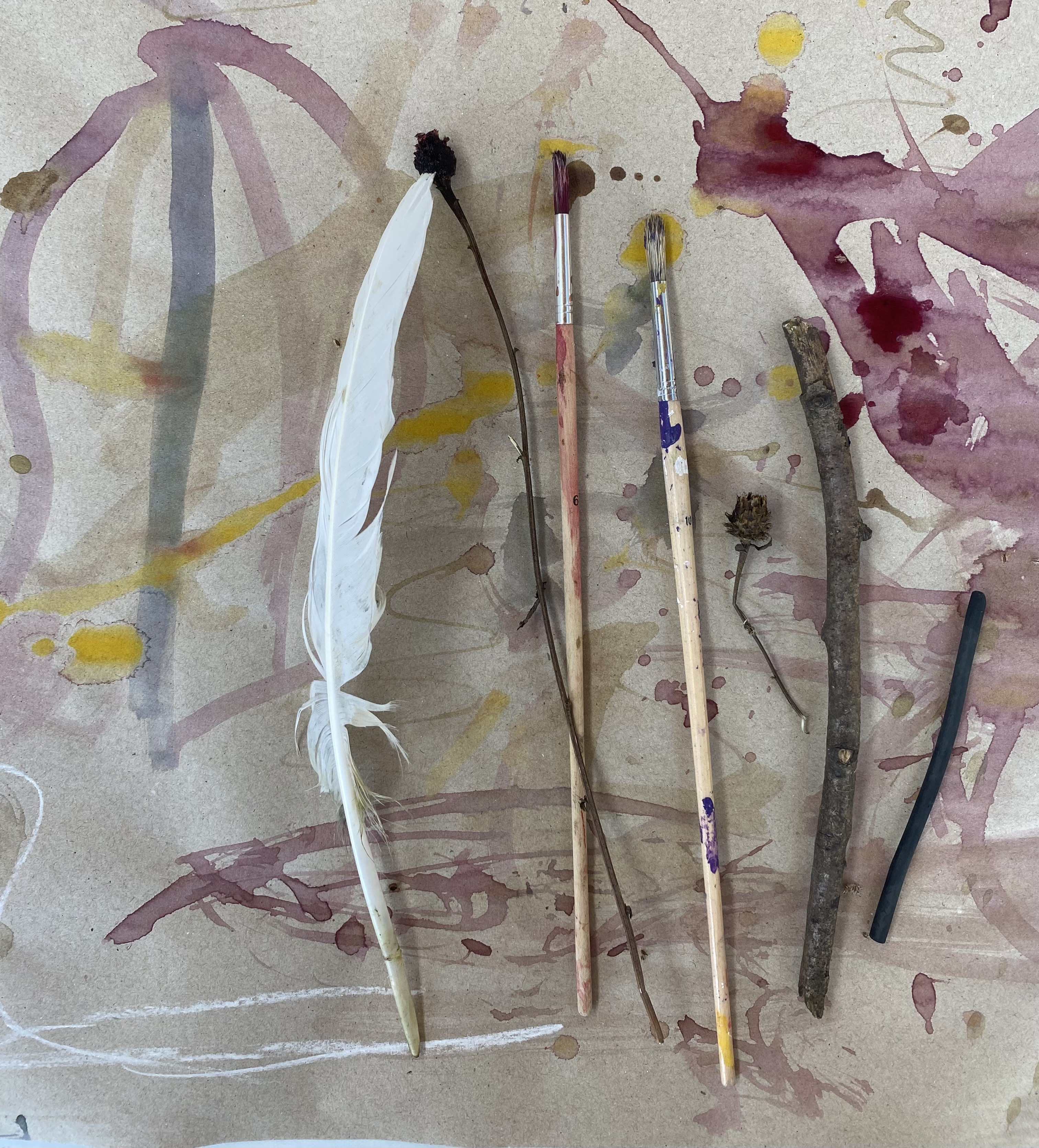
Rooted in nature

The themes for this day were inspired by the world beneath our feet and the extraordinary artwork of the Fantastical Forest. Artist Hilary Cox Condron and the CCI team welcomed visitors into the beautiful surroundings of Storey’s Field Centre and invited them to wander under some of the hangings from our Fantastical Forest, explore incredible mycelial networks being shared by researchers from the Crop Science Centre and make work in response.
-
I planned this day as a joyous exploration of nature, community and sustainability through scientific investigation, creativity processes and working with our powerful imaginations.
Hilary Cox Condron

As a charity we recognise the climate and ecological emergency facing us all, have joined Culture Declares an Emergency and developed an Environmental Pledge. Given the themes for the day and our commitment to actively reducing our negative impact on the environment by minimising the resources we use, the waste we produce and the emissions we generate , Hilary carefully researched how all the materials offered could fit this brief whilst also wanting to inspire love and awe for the nature on our doorsteps.
‘We used natural inks, mainly using foraged and allotment finds: black berries, elderberries, nettles, weld, beetroot. I confess the turmeric and red cabbage were supermarket bought - but the lure of the yellow and adding bicarbonate of soda to the cabbage to watch turquoise ink bubble up was irresistible. The onion skins were gathered from allotment donations and rummaging at the bottom of trays in the veg aisle. Using weld - which I harvested from a field by the river - felt so ancient and magical and the ink was such a vibrant yellow. The Romans used it to dye wedding garments, and apparently the robes of the Vestal Virgins, and the green clothes worn by Robin Hood and his Merry Men were dyed with a mix of weld and woad.

To make the inks - I let the various plants etc sit outside for a while, then gave them a good shake and rinse to remove any insects. Putting them in pans, I covered them with water and let them gently simmer for at least hour - until the colour looked strong - adding a dash of salt and spoon of white vinegar. Once cooled I sieved the ink mix through a funnel into glass bottles, adding gum arabic (one part to 10 parts ink) - a natural ingredient which can be bought in craft shops - and a whole clove to help preserve the mix
I loved sharing these stories and ways of making inks as we all made these marks together. It was wonderful to see so many participants totally engrossed in creativity.’ Hilary
We were delighted that artist Selena Scott worked with us for the first time and that so many people came along to make and talk together. Over 60 people joined in despite the record breaking temperatures. Huge thanks too to Thomas Irving and Polly Bridges from the Crop Science Centre, and our volunteers Gladys Jones and Diane Rich for their tireless support.
This day was organised by Eddington as part of Open Cambridge, 2023












